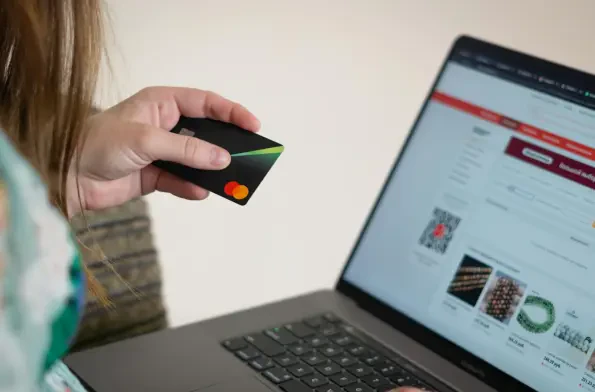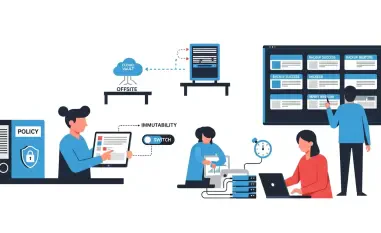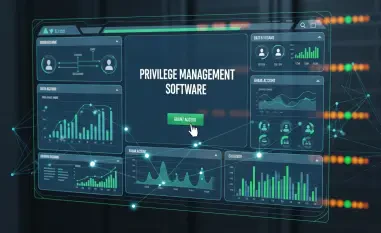In the fast-paced world of retail, security breaches are costing businesses billions, with losses from shrinkage hitting a staggering $112 billion in the United States just a few years ago, painting a grim picture of vulnerability. Imagine a bustling store where back-room doors are left unsecured, loading docks become entry points for theft, and outdated keys or cards fall into the wrong hands. This isn’t a distant nightmare—it’s a daily reality for countless retailers struggling to protect their assets. As threats evolve and employee turnover disrupts traditional systems, the question looms: how can the industry keep up with mounting risks?
The significance of this challenge cannot be overstated. Retail security isn’t just about preventing theft; it’s about safeguarding a company’s bottom line, reputation, and operational stability in an environment where every dollar counts. With internal theft alone accounting for nearly a third of shrinkage losses, the stakes are higher than ever. Mobile access control emerges as a transformative solution, promising not only enhanced protection but also streamlined management in a sector desperate for innovation. This article delves into why retailers must act now to adopt this technology, exploring its benefits, real-world impact, and practical steps for implementation.
The Retail Security Crisis: Are You Losing More Than You Realize?
Retailers face an unrelenting battle against shrinkage, a problem that drains profits at an alarming rate. Data from recent industry reports reveal that a significant portion of losses—nearly two-thirds—stems from theft, both external and internal. This financial hemorrhage affects not only large chains but also small businesses, where even a single incident can be devastating. The impact ripples beyond dollars, disrupting inventory management and customer trust.
Beyond the raw numbers, the operational toll is equally concerning. Vulnerable areas like storage rooms and delivery zones often lack adequate protection, becoming easy targets for unauthorized access. Traditional security measures, once deemed sufficient, now struggle to address these persistent gaps. Retailers must confront the harsh truth that ignoring these issues risks not just financial loss but also long-term damage to their brand.
The urgency to adapt has never been clearer. With employee turnover rates exceeding 60% annually in the retail sector, managing access through outdated methods becomes a logistical nightmare. Each lost key or unreturned card represents a potential breach waiting to happen. Recognizing this crisis is the first step toward exploring solutions that can turn the tide against escalating security threats.
Why Traditional Access Control Falls Short in Today’s Retail Environment
Traditional access control systems, built on physical keys, cards, and fobs, are increasingly obsolete in the dynamic retail landscape. These methods, while familiar, are riddled with vulnerabilities that modern criminals exploit with ease. Loss, theft, or duplication of credentials can compromise entire facilities, leaving sensitive areas exposed to unauthorized entry.
High employee turnover compounds the problem, turning credential management into a costly and time-consuming burden. When staff members leave without returning access tools, or when temporary workers require short-term permissions, retailers often find themselves unable to respond swiftly. This inefficiency not only hikes operational expenses but also heightens the risk of internal theft, a significant driver of shrinkage.
Moreover, these legacy systems lack the accountability needed to track access in real time. Without digital records, pinpointing responsibility for a breach becomes nearly impossible. As retail environments grow more complex with multiple locations and diverse entry points, the limitations of traditional methods reveal a critical need for a more agile and secure approach to safeguard assets.
The Power of Mobile Access Control: Key Benefits for Retailers
Mobile access control is redefining how retailers protect their operations by leveraging smartphones as credentials through cloud-based platforms. One standout advantage is real-time access management, allowing instant granting or revoking of permissions. This feature proves invaluable for handling high turnover or accommodating seasonal staff, ensuring that only authorized individuals can enter restricted zones at any given moment.
Another critical benefit lies in integration and accountability. These systems sync seamlessly with HR and scheduling software, aligning access rights with employee shifts to minimize misuse. Digital audit trails further enhance security by logging every entry and exit, providing a clear record to deter and investigate internal theft. Such transparency addresses a major pain point in retail loss prevention.
Cost-effectiveness and scalability round out the appeal of mobile solutions. Unlike hardwired systems, wireless and battery-powered options integrate with existing locks, slashing installation expenses. A centralized dashboard enables multi-store management without the need for onsite adjustments, as demonstrated by retail chains that have secured diverse locations efficiently. These advantages make mobile access control an indispensable tool for protecting profits in a high-stakes industry.
Voices from the Field: Expert Insights on Mobile Solutions
Industry experts are sounding the alarm on the need for retailers to embrace mobile access control. Michael Chaftari, a partner at a leading security technology firm, emphasizes, “Clinging to outdated systems is a gamble retailers can’t afford when mobile solutions deliver superior security and flexibility at a fraction of the cost.” This perspective resonates with many in the field who see digital transformation as inevitable.
Supporting these views, recent data paints a compelling picture. Studies indicate that theft accounts for a substantial share of retail losses, a challenge mobile systems directly combat through real-time monitoring and credential control. Retail managers who have adopted this technology often report significant improvements, such as a regional chain that slashed unauthorized access incidents by 40% within months of implementation.
These firsthand accounts and statistics highlight a growing consensus within the industry. From small businesses to national brands, the shift to cloud-based credentials is gaining traction as a proven method to streamline operations and bolster protection. The message from the field is clear: mobile access control isn’t just an option—it’s becoming the standard for forward-thinking retailers.
Making the Switch: Practical Steps for Retailers to Adopt Mobile Technology
Transitioning to mobile access control can be a straightforward process with the right approach. Begin by conducting a thorough assessment of current security weaknesses, focusing on high-risk zones like back rooms and loading docks where traditional credentials often fail. Identifying these gaps helps prioritize areas for immediate improvement and builds a case for investment in modern solutions.
Next, select a cloud-based platform that integrates with existing electronic locks to keep upfront costs low. Many systems are designed to be hardware-agnostic, facilitating a smooth rollout without requiring extensive overhauls. Retailers should also ensure the chosen solution offers a user-friendly interface, making it easier for staff to adapt to smartphone-based access without disrupting daily routines.
Finally, implement training programs to familiarize employees with the new technology through concise onboarding sessions. Setting up a centralized dashboard for managing permissions across multiple locations is equally crucial, enabling swift updates such as revoking access for terminated staff. By following these actionable steps, retailers can enhance security, reduce administrative burdens, and stay ahead of evolving threats with confidence.
Final Reflections and Next Steps
Looking back, the retail industry grappled with staggering losses and operational hurdles that exposed the fragility of traditional security measures. Mobile access control emerged as a beacon of innovation, offering tools that tackled theft and inefficiency head-on. Retailers who took the leap witnessed tangible benefits, from tighter control over access to substantial cost savings.
Moving forward, the path is clear for those yet to adopt this technology. Assessing vulnerabilities and investing in scalable, cloud-based systems become the logical next step to fortify operations. Partnering with providers who offer tailored solutions ensures a seamless transition, empowering businesses to protect their assets effectively.
Beyond immediate action, staying informed about emerging security trends promises to keep retailers one step ahead. Exploring integrations with other digital tools, like inventory tracking, hints at even greater efficiencies on the horizon. Embracing mobile access control isn’t just a fix for past problems—it lays the groundwork for a more resilient retail future.













